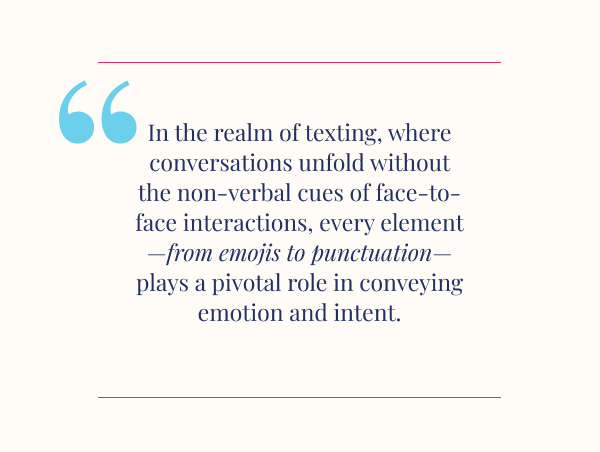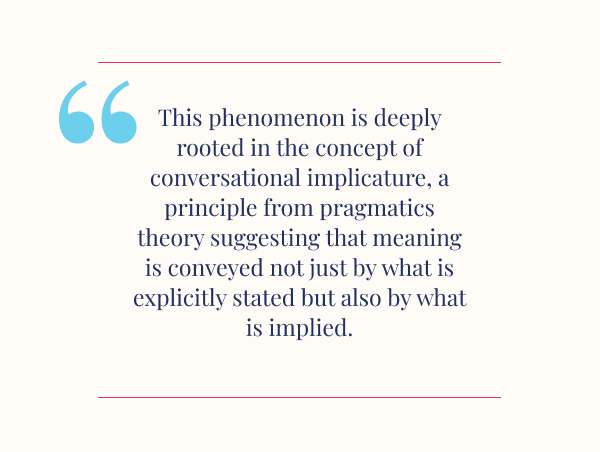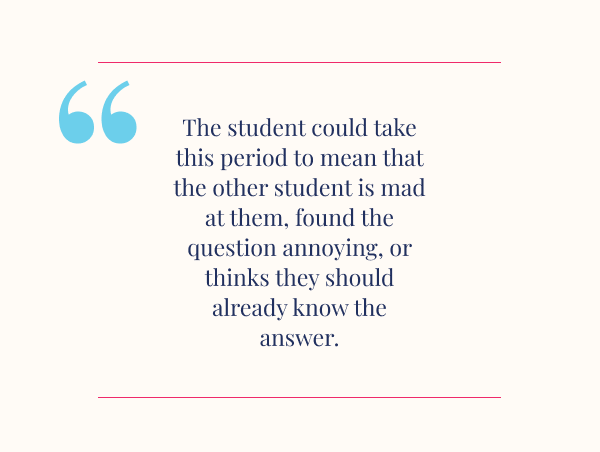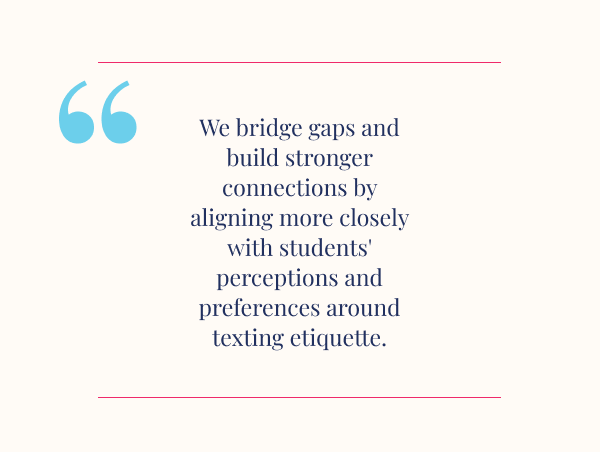Introduction
In the digital age, where emojis reign supreme and ‘LOL’ is a linguistic staple, the humble period is at the center of a surprisingly heated debate. At Mainstay, we’re all about sparking progress through conversation. But what if I told you that something as small as a period could be putting a full stop to engaging conversations with students? Let’s dive into why ditching periods in texting conversations might just be the key to more meaningful, and engaging conversations with students.

Tiny Marks, Big Impact
In the realm of texting, where conversations unfold without the non-verbal cues of face-to-face interactions, every element—from emojis to punctuation—plays a pivotal role in conveying emotion and intent. In 2015, Dr. Celia Klin, a psychology professor at Binghamton University and Dean of the Harpur College of Arts and Sciences, led a research team that asked 126 undergraduate students to rate the sincerity of text message exchanges. The study showed that responses that ended with a period were perceived as less sincere compared to those without any punctuation. This suggests that in text communication, the simple act of including a period can subtly alter the perceived tone and sincerity of the message (Gunraj et al., 2016).
While periods serve their grammatical purpose in formal writing, their role in texting seems to extend beyond mere sentence closure into affecting emotional tone. Dr. Klin highlights this unique challenge, noting that “Texting is lacking many of the social cues used in actual face-to-face conversations…Thus, it makes sense that texters rely on what they have available to them — emoticons, deliberate misspellings that mimic speech sounds and, according to our data, punctuation” (Feltman, 2015).
This shift invites us to reconsider our approach to grammar within texting conversations. Traditional rules that govern formal writing don’t always apply in the informal, rapid-paced world of texting. While we know proper grammar is important at Mainstay (as evidenced by this article), we understand the need to embrace and respect that texting is a distinct medium with its own linguistic norms and expectations. We intentionally design our scripts to align closely to social norms. Our top priority is to create a tone and language that makes students feel heard and that encourages their participation. We aim to foster stronger parasocial relationships through every message, using language that resonates with today’s students.
Reading Between the Lines
You might be wondering how a simple period could have so much impact on how a message is received – it’s simple grammar after all. But just like in-person conversations, the context surrounding what we say is as important as the words we use. As social beings, we read between the lines – a lot. This phenomenon is deeply rooted in the concept of conversational implicature, a principle from pragmatics theory suggesting that meaning is conveyed not just by what is explicitly stated but also by what is implied (Grice, 1975).


Consider an exchange between two students discussing class schedules…
In this scenario, the response to the question, though affirmative and seemingly straightforward, is subtly transformed by the inclusion of a period. As one Reddit user insightfully states, “Doing this feels purposeful and the extra ‘ending’ can end up changing the tone or feeling of a conversation. Almost like you aren’t ending the text, but you’re ending the conversation” (Cannolium, 2023).
While some might see it as just using proper grammar, younger generations, in particular, see the period as redundant, and interpret its use as a deliberate way for the writer to add negative emphasis. The student could take this period to mean that the other student is mad at them, found the question annoying, or thinks they should already know the answer.

Redefining Conversation Endings
When we’re texting, the end to each thought is implied by the end of the message—it is inherently clear without needing punctuation’s traditional signal. We bridge gaps and build stronger connections by aligning more closely with students’ perceptions and preferences around texting etiquette. While periods are the focus here, in general, we invite you to explore and reconsider your views on punctuation in texting with an open mind. “Thus, our claim is not so much that the period is used to convey a lack of sincerity in text messages,” Dr. Klin explains, “but that punctuation is one of the cues used by senders, and understood by receivers, to convey pragmatic and social information” (Gunraj et al., 2016).

However, embracing change doesn’t mean overhauling everything overnight. It’s about growing with new insights—when we know better, we do better. So next time you’re drafting messages for students, consider leaving out that period at the end of the text – it might just help your students engage more authentically!
Ready to take advantage of more expertise like this? Join the conversation and request a meeting with our team.


